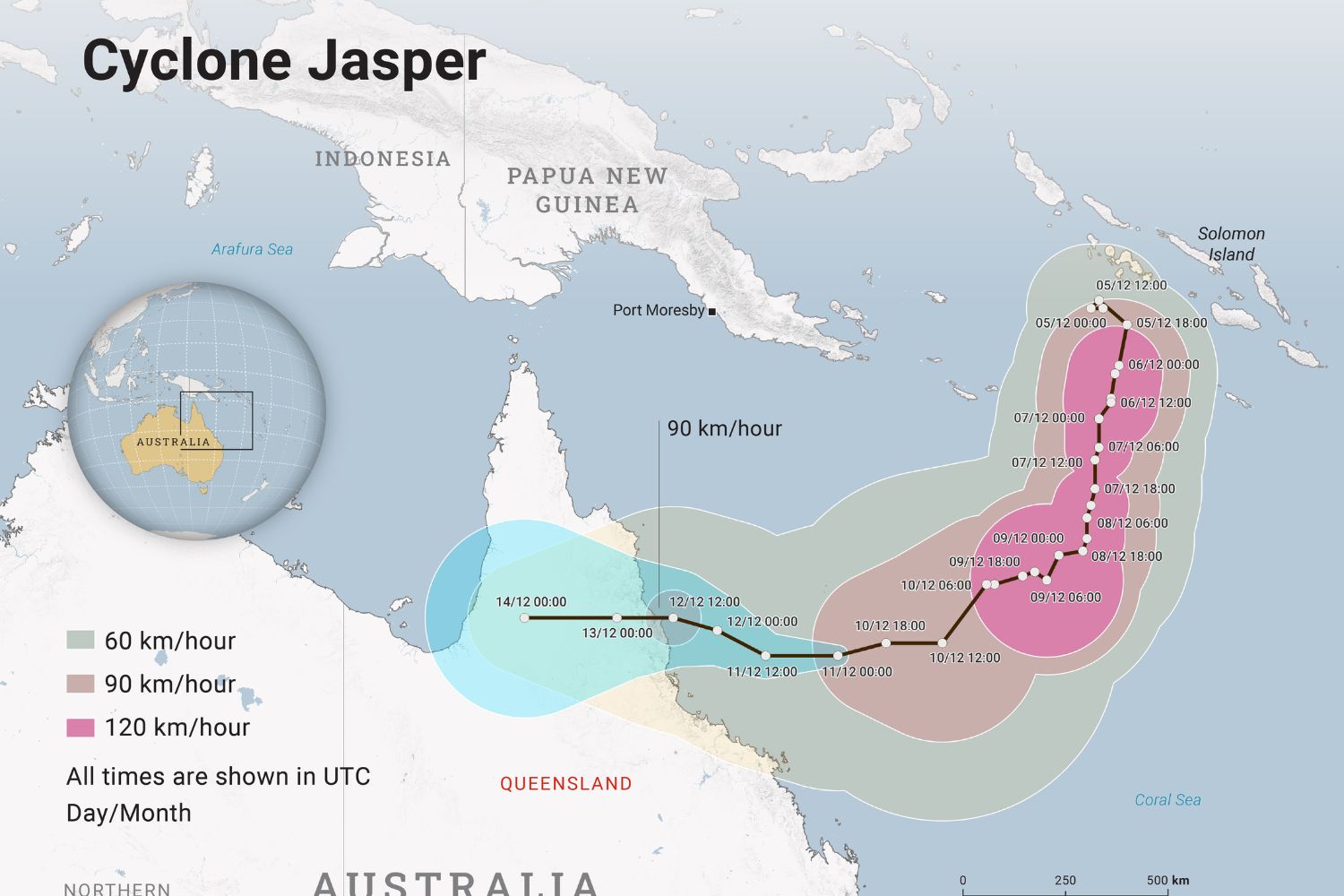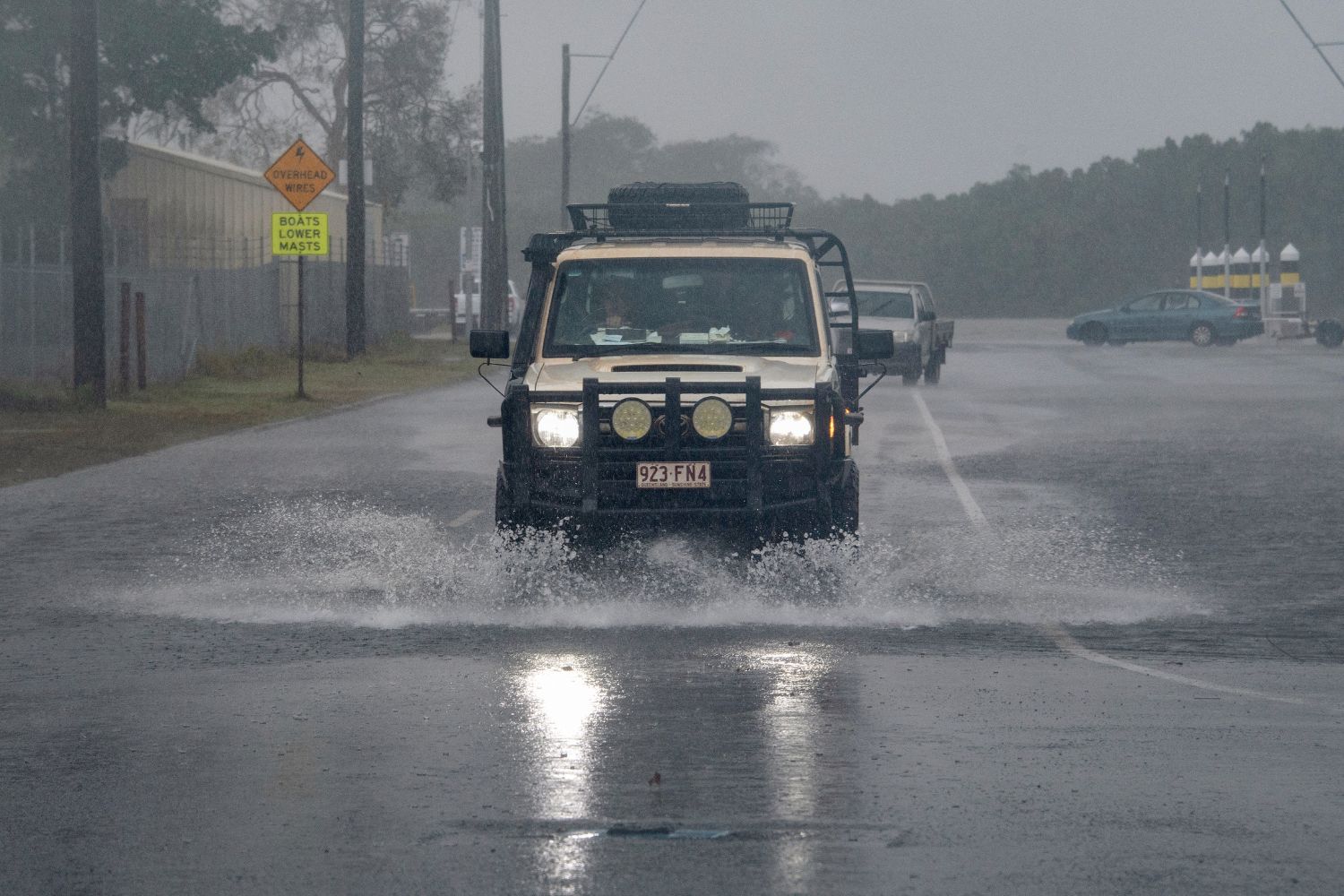Australia is known for its extreme weather conditions. Take it from poet Dorothea Mackeller’s famous poem “My Country” where she describes the landscape as “sunburnt” with “droughts and flooding plains.”
Whether you live by the coast or out in the country, all Aussies are susceptible to Mother Nature and the many trials and tribulations she puts us through.
WATCH NOW: Cyclone Debbie is seen from space in 2017. Article continues after video.
Whilst weather events such as bushfires, flooding, and even earthquakes can take place all over the country, tropical cyclones tend to target those living in the northern parts of Western Australia, Queensland, and the Northern Territory.
What is a cyclone?
Tropical cyclones often start life as a tropical low (aka a bad thunderstorm). From there if the conditions are right, and the warm, moist air continues to rise, the low will become a cyclone and start spinning and therefore grow in strength and severity.
Once the winds generated by the tropical low become 63 km/h or greater, the storm is reclassed as a cyclone and given a name of its own.

How long do cyclones last?
Whilst cyclones can (and will) often last for many days and even weeks, they do eventually lose momentum and break up when making landfall or moving across cooler oceans – the change in atmospheric conditions becoming unfavourable.
How common are cyclones in Australia?
Typically, the most severe cyclones take place between May and June and October to November, with an average of 11 forming per cyclone season
Of those 11, an average of 4 will make landfall, as recently seen with Tropical Cyclone Jasper which made landfall near Cairns on December 13th, 2023.

Are hurricanes, typhoons, and cyclones the same?
Believe it or not, cyclones, hurricanes, and typhoons are all the same thing – the only difference is where they form.
Hurricanes form in the Northern Atlantic Ocean, central North Pacific Ocean, and the eastern North Pacific Ocean whilst typhoons come from the Northwest Pacific Ocean.
As for cyclones, they come from the South Pacific and Indian Oceans that surround Australia.
What was the worst cyclone in Australian history?
In 1899 Cyclone Mahina made landfall at Bathurst Bay in Queensland, killing more than 300 people, and cementing itself as one of the most, if not the most, intense (and deadly) tropical cyclones to ever hit Australia.
So strong was the cyclone that scientists are arguing to this day that it is the most intense ever recorded in the Southern Hemisphere.

How to prepare for a cyclone in Australia
- Prepare to disconnect/shut down your gas, electricity, solar power, and water services.
- Have a safe room. This should be the strongest and safest room in your home away from big windows, preferably a walk-in wardrobe or hallway.
- Close and secure all windows.
- Fuel up and protect your vehicles in case you need to evacuate.
- Prepare to sandbag your internal drains (including toilets) to prevent sewage backflow.
- Fill up your bathtub with water as a precaution in case the water is shut off.
- Secure and raise any outdoor furniture or equipment.
- Empty and raise any appliances, furniture, and electric items.
- Make sure appropriate house maintenance has been undertaken to protect yourself and your property.
- Pack an emergency kit full of basics such as long-life food, toiletries and first aid, batteries, a torch, and a radio in case the power goes out (at a minimum).
More information about preparing for cyclone season in Australia can be found here.



